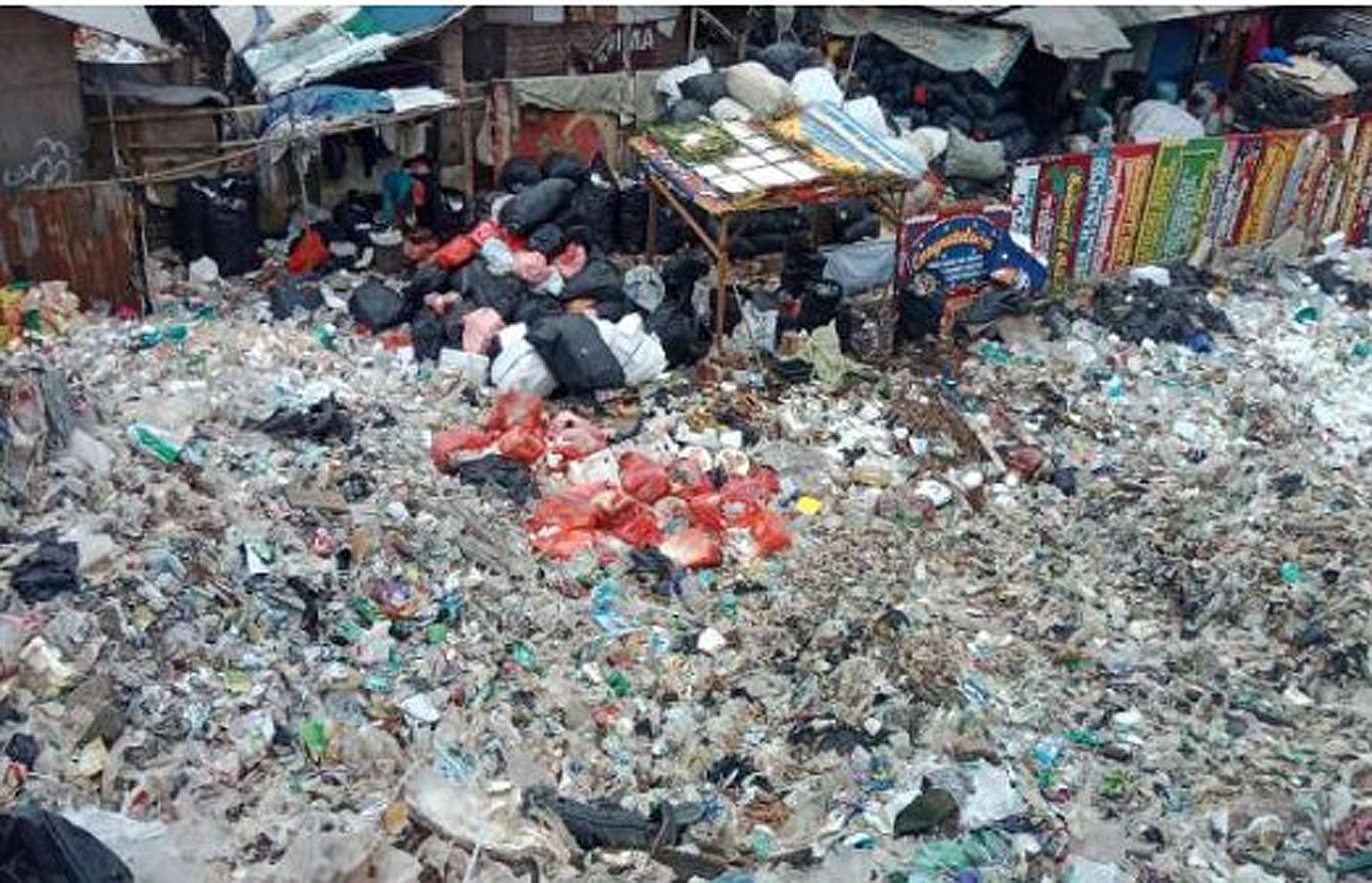Medical waste dumped improperly in Indonesia, raising concern
Sign up now: Get insights on Asia's fast-moving developments

Masks, gloves and fluid bags have been found scattered among daily household garbage sent to two dump sites in Bekasi, on the outskirts of Jakarta. Medical waste also made up 16 per cent of the total garbage floating in Cilincing and Marunda river estuaries in Jakarta Bay in March and April.
PHOTO: INDONESIA'S NATIONAL WASTE COALITION
Linda Yulisman Indonesia Correspondent In Jakarta, Linda Yulisman
Follow topic:
Surgical masks, gloves, face shields and fluid bags have been found scattered among daily household rubbish at two dump sites in Bekasi, on the outskirts of Jakarta, raising fears that waste pickers and residents nearby could be infected by the coronavirus.
Meanwhile, healthcare waste made up 16 per cent of the total garbage floating in Cilincing and Marunda river estuaries in Jakarta Bay in March and April.
And a key ingredient in disinfectants - chlorine - poses a rising pollution threat to the Brantas River estuary in Indonesia's second-largest city, Surabaya.
These findings, part of data collected from agencies such as the National Waste Coalition and the Indonesian Institute of Sciences, are worrying proof that the world's fourth-most populous nation is struggling to manage the mounting medical waste left by the battle against the coronavirus that has infected over 83,000 people and killed nearly 4,000 in the country.
Dr Intan Suci Nurhati, a senior researcher at LIPI's Research Centre for Oceanography, said the personal protective equipment (PPE) found in Cilincing and Marunda rivers likely came from households.
Nevertheless, the amount of medical waste, including PPE, syringes and intravenous lines surged by 70 per cent from before the pandemic to 23 tonnes daily during March to May in hospitals treating Covid-19 patients, according to Dr Lina Tri Mugi Astuti, secretary-general of the Indonesian Environmental Scientists Association (IESA).
She has been looking at data collected from 71 hospitals treating Covid-19 patients, out of 133 surveyed jointly by IESA and the Indonesian Hospitals Association from April 1 to May 20. The average daily volume of waste before the pandemic was 13.6 tonnes.
"That translates into a rise to 1.62kg per (hospital) bed in the pandemic period, from 0.96kg before the pandemic," she told The Straits Times.
Dr Lina said hospitals should use incinerators to burn medical waste.
"Hospitals that do not have their own incinerators can work with a third party. But, they have to at least manage the waste well before disposing them," she said.
However, a senior official in Jakarta dismissed the concerns over medical garbage, saying hospitals with incinerators in the capital city are already using the incinerators to get rid of medical waste.
-
70%
Surge in the amount of medical waste, including PPE and syringes, from 13.6 tonnes daily before the pandemic to 23 tonnes during March to May in hospitals treating Covid-19 patients, according to Dr Lina Tri Mugi Astuti, secretary-general of the Indonesian Environmental Scientists Association.
Ms Rosa Ambarsari, head of toxic and hazardous waste management division at Jakarta's Environment Agency, said those without incinerators are working with third parties to sort out the medical trash.
Similarly, in Indonesia's second-most populous province of East Java, Mr Mohamad Nizamudin, an official in charge of toxic and hazardous management at the province's Environment Agency, said provincial hospitals are working with medical waste processors.
However, the use of incinerators has raised other concerns for residents who live near such facilities.
Ms Sutamah, a resident of Lakardowo village in Mojokerto, East Java, where a medical waste incinerator is located, said intensified burning during the pandemic is another cause for concern.
"The incinerator now burns more medical waste than before. It spews thick black smoke and pungent odours," the 43-year-old said.
She claimed that many village inhabitants have suffered from respiratory and skin problems. The incinerator also destroys medical waste from Bali island.
Asked about addressing chlorine pollution in rivers, Ecological Observation and Wetlands Conservation executive director Prigi Arisandi said the government must map out locations with higher chlorine levels, then trace the sources. "There should be... warnings that chlorine waste should not be disposed of directly to drainage," he said.
Mr Bagong Suyoto, head of the National Waste Coalition, said that while waste pickers are aware they are at risk of Covid-19 infection from contact with the medical waste they sort out, they are left with no choice.
"If they don't pick waste just for a day, they cannot eat. It is better for them to keep working despite the threat of the disease, instead of starving," he said.

